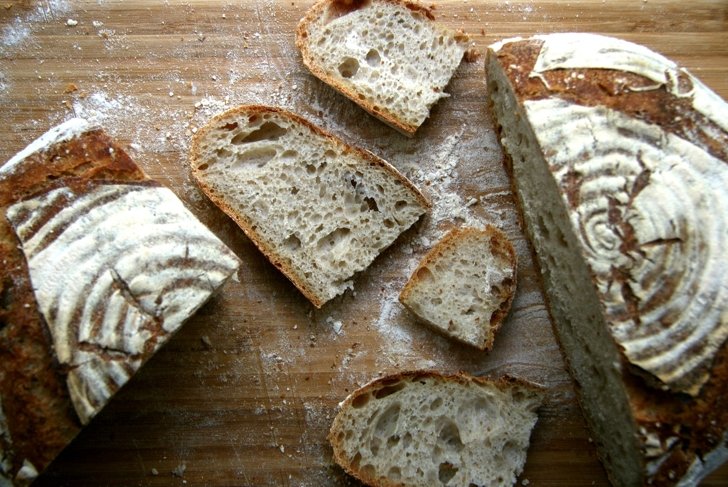
My New Year’s resolution: to put 2020 firmly behind me (and maybe skip ahead to 2025 just to be safe). Yet, as I reflect on a turbulent year, there are moments of inspiration tangled up in the pile of used face masks that I keep in my car’s glove compartment.
A year in review
It’s never easy to prepare for those big, profound changes that transform our lives. Whether it’s parenting or relationships or midlife career changes, no amount of reading or studying compares to the actual experience. As Robert Frost wisely said, “The best way out is always through.”
And that hasn’t been truer than with a year like 2020.
Very few, if any, of us foresaw this past year shaping up to be the year that it was. Who could have predicted closed travel borders? Or shuttered schools and shopping malls? Or that owning a bottle of hand sanitizer would become a much-coveted status symbol? Hold your Rolex, I’ve got Purell.
But despite its difficulties, and its tragedies, and its shared social grief, 2020 also held moments of self-discovery and self-growth.
It empowered us to unlock our inner Martha Stewart as we crafted and planted and cooked and baked.
It pulled back the curtain on how we coped with stress (perhaps opening our eyes to how some of our coping mechanisms might not be ideal).
It reinforced how important it is to have strong, inspiring women in roles of leadership.
And so much more.
As we run toward 2021 with open arms, I want to forget a lot of 2020. But there are eight incredible lessons I want to remember, forever.
Defence against the dark arts
In January, most of us had a cursory understanding of how germs spread. By April, we were casually throwing around terms like “herd immunity” and “incubation period” as if we were Mayo Clinic medical interns.
It was suddenly in vogue to brag about how diligent we’ve been at social distancing and personal hygiene. And while wearing face masks was unpopular in the spring, by summer, eight out of 10 Canadians supported making masks mandatory in public spaces. If we can stick with these new hygiene habits, it’ll bode well for us, whether we’re talking about the common cold or more serious diseases.
We also began taking nutrition more seriously. Because of the pandemic, sales of immunity supplements jumped by 25 percent, led by old standbys like vitamin C, as well as newer trends like probiotics.
Other immune-boosting supplements that many of us discovered in 2020 include vitamin D, zinc, and elderberry. These supplements don’t just support our immunity, but specifically help with viral infections and upper respiratory symptoms.
Supplement virginity
As the pandemic grew, half of all consumers said they were increasing their use of immunity supplements, and 20 percent of people who had never taken supplements before were planning to start for the very first time.
School’s out, forever
Schools shuttered their doors this year, sending an estimated 6 million Canadian children home. Worldwide, 250 million kids were affected by school closures.
Like Alice Cooper once rocked, “School’s been blown to pieces.” And for many parents, we were left to pick up those pieces and rebuild our children’s education ourselves.
One in three Canadian parents plan to be more engaged in their child’s learning, with approximately half of parents spending approximately three hours a day on homeschooling.
Yet many of us didn’t know where to start, at least at first. Perhaps that’s why, in the same national survey, three out of five Canadian parents said they held a newfound appreciation for schoolteachers.
Until classrooms fully reopen, we’re all making do with at-home workbooks and worksheets, video conferences with teachers, and educational television shows. And parents, take heart—we’ve learned this year that “doing our best” is “good enough” during these trying times.
A growing idea
Homeschooling trends have been steadily growing in Canada. Since the mid-2000s, the number of homeschooled students jumped by approximately 30 percent, with Alberta and Ontario having the largest number of homeschooled students.
Keeping up with the corona kitchen
Remember when Pinterest was less of a to-do list and more of a dream board?
But then society shut down, and with hours of free time, we became top chefs: 54 percent of us say we’re cooking more, and 46 percent of us say we’re baking more.
There was the sourdough trend that stretched our expectations to absurd limits. (Global yeast shortage? Check. Fascination with “exotic” sourdough yeast from the Oregon Trail or the Yukon Gold Rush? Check.)
And who can forget whipped coffee, which started as a viral online video that has since racked up tens of millions of views.
Some theorize that this obsession with baking and cooking is a type of meditation, distracting us from the turmoil outside the kitchen. Or perhaps the ability to handcraft and enjoy something new gives us a sense of optimism and control when everything else feels chaotic.
Whatever the psychological cause, it’s here to stay. A third of us say that even after the pandemic is over, we’ll continue to make more home-cooked meals and dine out less.
A recipe for success
Need something new and scrumptious to post on social media and make your friends envious? Check out <alive.com>’s recipe section for your latest inspiration.
- Start with Crusty Sourdough Italian Loaf, obviously.
- Transform it into Sourdough Applesauce French Toast to take it up a notch.
- While cooking, sip Coconut Milk Iced Thai Coffee Latte if you’re tired of whipped coffee (and craving some international flavours while airplanes remain grounded).
Who runs the world?
Girls!
This year, we saw strong, powerful women inspire us with their effective pandemic leadership.
From BC’s Dr. Bonnie Henry to Canada’s chief public health officer, Dr. Theresa Tam, many of the top officials who navigated us through 2020 were women.
And it’s not just in Canada. Two recent studies found that countries led by women did significantly better at managing the pandemic than countries led by men.
Dr. Bobbi Thomason, PhD, a Pepperdine University (California) professor who specializes in gender, says women face a double bind: If they’re too compassionate, they’re deemed weak. If they’re too assertive, they’re seen as cold and mean.
“Many female leaders develop the ability to be high on both axes of warmth and competence,” she explains. “The pandemic … needed both of these.” Additionally, Thomason says women are more likely to be perceived as competent when advocating for others, so when these leaders have made tough calls for their communities, their leadership has been “effective and well-perceived.”
A role model for the future
Eighty-six percent of women say they’re encouraged to take on leadership roles themselves when they see other women in leadership. “This pandemic illustrates why we need to invest in diverse women’s leadership opportunities and empower girls to reach their potential,” reports the Canadian Women’s Foundation.
It’s 5 o’clock somewhere
In 2020, 25 percent of Canadians are drinking more, with the top reasons being boredom, pandemic-related stress, and a lack of a routine schedule.
“People are drinking alone more frequently, earlier in the day or evening, and potentially more in quantity,” says behavioural psychologist Dr. Michael Mazius. “COVID-19 has created considerable stress for many. At the end of the day, a drink or two can feel like a just reward or relief.”
The occasional drink may be fine for some, but over-relying on alcohol can be detrimental in the long term.
“People are far better off exercising, finding a meditation practice, and socializing (at a distance),” says Mazius. “Those are far better habits to develop than daily alcohol use.” Supplements like kava kava and magnesium may also help.
Lend me your ears
A systematic review of 104 clinical trials found that listening to music has a significant effect on reducing stress. Dr. Manisha Singal, a frontline COVID-19 critical care doctor, says that singing her favourite tunes helps calm her down. “One of my favourite sing-along songs is ‘I Will Survive,’” she notes. A bit on the nose, but we like it.
Let’s (not) go to the mall
We’ve made sweeping changes to our shopping habits in 2020.
As everyday life ground to a halt, Canadians flocked online. In the spring, in-store retail sales dropped by more than 25 percent and online shopping skyrocketed by nearly 64 percent. Compared with May 2019, this past May saw online sales jump by a record-breaking 110.8 percent.
The pandemic also reconnected many of us to the importance of taking care of our own.
Consumer behaviour studies found that more of us chose to shop with a conscience during 2020, prioritizing local vendors and local sustainable products. And many shoppers now say they’re more focused on buying food that’s healthy, perhaps recognizing how diet affects their immunity and COVID-19 risks.
In 2020, we saw how global supply chains and shipping can quickly freeze up due to factors beyond our personal control. Supporting local businesses, farms, and craftspeople creates more economic and food security for all of us at home.
It simply makes cents
For every dollar that you spend at a local small business, 67 cents is reinvested in your local community and another 50 cents of additional business activity gets shared within your community.
A zooming commute
I used to commute two hours into downtown Vancouver. Now, my biggest traffic jam is a pile of my toddler’s toys in the hallway.
The number of Canadian businesses that let their employees work from home doubled in 2020, and nearly a quarter of businesses say they expect to continue this new work-from-home model long after the pandemic is over.
Working from home has given us many benefits, including more freedom and flexibility, but it also comes with drawbacks. From the obvious—don’t forget to put on pants—to the not so obvious, we’ve all learned how to navigate our online video meetings:
- Grab a lamp. Too many of us have bad lighting that makes it look like we’re in witness protection.
- Use that mute button. No one needs to hear you typing or going to the bathroom.
- Log on a few minutes early. No matter how tech savvy you are, there will be hiccups.
The daily download
The number of people using the video conferencing app Zoom jumped by 378 percent this year. Other online service providers, such as Microsoft, saw similar spikes in usage.
Embracing your inner Martha
Home Depot’s sales went up by 23 percent, and the company attributed it to people investing in pandemic home projects such as painting the spare bedroom or building a backyard deck. Other home improvement and craft supply stores reported similar trends.
The factors are manifold. For some, lockdowns finally gave us time to finish that project we’ve been putting off. It’s also been a way to keep the whole family entertained and busy while parks, movie theatres, and other traditional forms of entertainment are curtailed or shut down.
For others, it’s an outlet for the energy and ingenuity we might have otherwise poured into other endeavours. For instance, we’re seeing a rise in DIY labs, where people are curiously playing around with everything from DIY beer brewing to DIY insulin.
If necessity, as Plato said, is the mother of invention, the necessary changes forged in this pandemic will change how we view DIY and our own sense of independence and invention.
Getting started with DIY
Never tried DIY before? To be successful (and build up your self-confidence), pick a project that isn’t pricey, can be done in one afternoon, and won’t burn down your house if you mess it up. Think sanding and staining old furniture, painting a kid’s bedroom, or replacing that scuffed-up crown moulding.
















